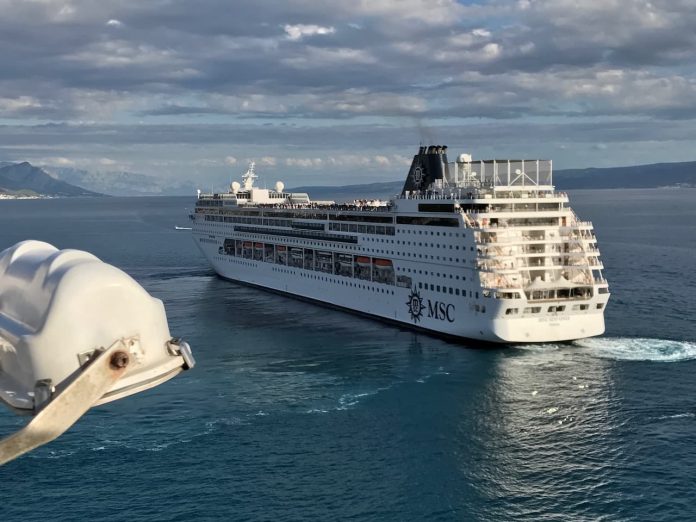The 2020 cruise season is facing an unprecedented crisis, with cruise ships subject to a global pause for six-months now.
Cruise lines started to feel the impact of COVID-19 as early as February, when itineraries were impacted on voyages that included Asian destinations.
At this time, Australia saw an influx of cruise ships, as vessels heading to Asian ports diverted to Australia due to travel restrictions being implemented by governments worldwide.
Visitors to our ports included the iconic 149,500-tonne Queen Mary 2, which took on a circumnavigation of Australia in place of a voyage to Singapore and Hong Kong.
P&O’s 85,000-tonne Arcadia spent extra time in Australian waters, while the 90,900-tonne Queen Elizabeth’s redeployment to Japan was cancelled in favour of additional Australian voyages.
However, the influx of cruise ships in Australia was short lived. By mid-March the global situation had changed dramatically, while locally Australia was experiencing growing COVID cases.
In mid-March, cruise lines entered into an unprecedented global pause of operations. QM2 prematurely ended its 2020 world cruise in Fremantle on 15 March, with all but a few hundred passengers (who were unable to fly) leaving the ship and making alternative journeys home by air from Perth.
On the east coast, P&O Australia’s fleet, as well as Carnival Spirit, ships of the Princess Fleet and Queen
Elizabeth left Aussie waters when the Australian Government implemented a never-before-seen cruise ship ban.
These ships all made their way north to the Philippines, where they anchored off the coast of Manila in a huge cluster of laid up vessels that at one point included more than 20 cruise ships!
The cruise pause was initially set at 30 days. But as COVID-19 continued to spread globally, it has been extended and at the time of writing the pause stretches to the end of October – with some cruise lines pushing sailings out to the end of 2020 or even into early 2021.
In August, leading luxury cruise brand Cunard cancelled all of its 2021 Australian voyages, with the fleet not expected to resume cruising for the rest of this year.
However, despite the ongoing challenges facing the industry, in recent weeks, some cruise lines have recommenced cruising in specific geographic locations.
River cruise lines in Europe were among the first companies to restart sailings, with A’Rosa and Nicko Cruises recommencing voyages on European rivers.
These ships set sail with reduced passenger numbers, as well as new social distancing and cleaning measures in place on board.
Some ocean-going cruise lines have also recommenced itineraries, with a number of these voyages already hitting major hurdles.
Norwegian-based cruise brand Hurtigruten was among the first ocean cruise lines to return to passenger cruising. The company implemented a series of health and safety protocols to facilitate voyages during the COVID pandemic.
Yet despite this, there has already been a significant outbreak aboard the ship Roald
Amundsen.
In August, the Paul Gauguin cruise ship (which had recommenced cruising in the Pacific) had to cut a voyage short after a single case of COVID-19 aboard; with the journey terminating in Papeete, French Polynesia.
Sea Dream Yacht Club was also subject to a Coronavirus scare, with one person testing positive in Denmark after a voyage aboard Sea Dream I. Fortunately, no other guests aboard the ship tested positive.
These COVID scares did little to improve the public image of cruising, which has been under the media spotlight in recent months.
However, there remains significant support for cruising and cruise lines, with many travellers eager to take to the seas once again.
In response to this demand, European cruise operator MSC is sailing again, with the 181,500-tonne Grandiosa departing Genoa, Italy carrying 1,000 passengers.
A further 1,500 people joined the ship at other Italian ports, allowing 2,500 people to enjoy an ocean voyage on one of the largest cruise ships in the world.
Grandiosa’s maximum passenger capacity is 6,300 people. But the lower passenger count isn’t due to lack of interest. Rather it is to enable social distancing, as well as enhanced health and safety measures on board.
MSC’s plan to put a second ship back to work has been delayed. The 95,100-tonne Magnifica was due to set sail on 29 August, but that ship’s voyages to Greek ports involve additional testing and screening, which has led to softer passenger demand, while German-based AIDA cruises had to cancel two planned voyages due to regulatory hurdles.
Italian brand Costa Cruises will put two ships to work in September, with the 92,700 tonne Costa
Deliziosa and the even larger 132,500-tonne Costa Diadema sailing from Italian ports on western Mediterranean voyages.
These 2020 cruise voyages are very different from travel in the pre-COVID world – with reduced capacity on board those ships that are sailing, as well as enhanced health screenings – both at embarkation and throughout the voyage.
This includes temperature checks, health questionnaires and changes to the way food and beverage is served during the cruise.
While cruising is reopening in some regions, cruise voyages for Australian travellers are some way off. Australia’s international border remains closed, while foreign-flagged cruise ships are banned from entering Australian waters until at least 17 September – though this will likely be extended.



































